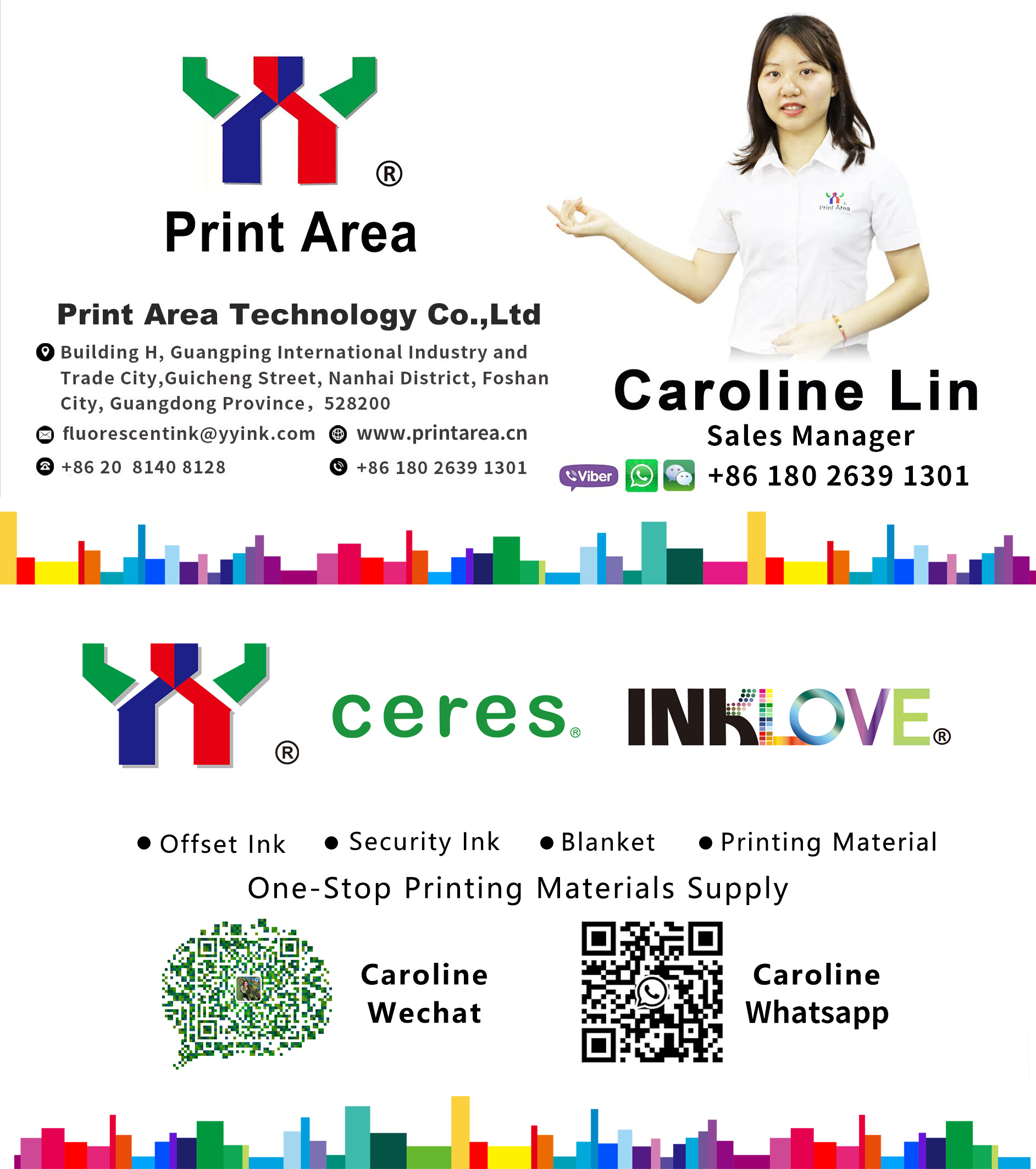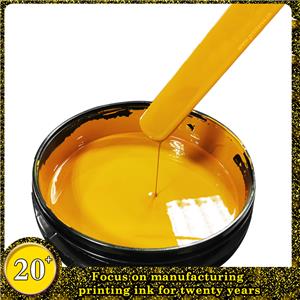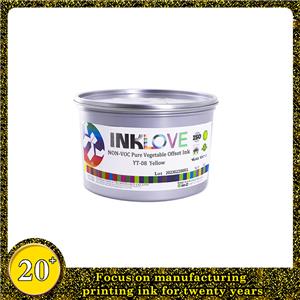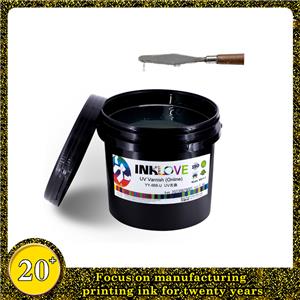Design, Development and Exploration of Pure Vegetable NON-VOC Offset Printing Ink
As the environmental protection requirements of countries around the world are increasing, the printing industry and users of printed products have put forward higher requirements for the environmental performance of printed products. In this case, the original mineral oil system offset printing ink will be replaced by new and more environmentally friendly inks due to its high VOC emissions and many problems in printing adaptability. In order to seize the market of environmentally friendly inks, mainstream ink manufacturers in various countries around the world have increased their research and development efforts on environmentally friendly inks and have successively launched their environmentally friendly products. The development of environmentally friendly inks has therefore shown a more rapid development trend than ever before. From traditional inks based on mineral oil to soybean oil inks, and then to 100% pure vegetable oil inks, offset printing inks are developing in the direction of high technology content, high vegetable oil content, and ultra-low VoC emissions. Pure vegetable oil inks are becoming an ideal substitute for traditional mineral oil inks with their excellent environmental performance and excellent printing adaptability. But so far, among the mainstream ink manufacturers in the world, only a few large ink manufacturers such as DIC and TOYO in Japan, Sunchemical in the United States,Ceres in the China have mastered the production technology of pure vegetable oil inks, while most of the others are still at the soy bean offset ink stage.
The existing environmentally friendly products in my country's ink industry are only two types: aromatic-free ink and soy bean offset ink, while the third type of NON-VOC ink just start. In addition, most soy bean offset inks provided by Chinese ink manufacturers are only suitable for printing on certain specific papers. For papers with poor absorption and rough surfaces (such as matte coated paper, light coated paper, wood grain paper, etc.), there are problems such as poor drying, easy sticking to the back, and easy dirt.The limited adaptability to paper has affected the further promotion of soy bean offset ink, putting soybean oil ink in an awkward position in the market.
The reason is that soybean oil is a semi-drying vegetable oil, the double bond content in soybean oil molecules is relatively low, and the reaction activity is low, the oxidation reaction occurs slowly, and the relative molecular mass and molecular volume of the soybean oil itself are larger than those of mineral oil, and the penetration speed on paper is relatively low, resulting in poor drying of the ink. Especially when the amount added to the ink exceeds 20%, the drying and fixation of the ink slow down significantly, so the quality of the soybean oil ink currently available in China is not satisfactory. This paper analyzes the design process of pure vegetable oil ink and the problems encountered in the experiment, and proposes corresponding solutions.
1.Types of Eco-friendly Inks

1.1 Aromatic-free ink
Aromatic-free ink uses mineral oil with aromatics removed as solvent.
The mass fraction of aromatics is ≤1%, which reduces Voc emissions to achieve environmental protection. However, since it belongs to the mineral oil ink system, the problem of poor ink performance still exists.

1.2 Soybean oil ink.
Soybean oil ink meets the requirements of the American Soybean Oil Ink Association. For offset sheet-fed ink, the soybean oil mass fraction is ≥20%, but it still contains some mineral oil. Although the overall ink properties of this ink are much better than those of traditional mineral oil ink, since soybean oil itself is a semi-permeable vegetable oil, when the content is high, the ink will have problems such as slow drying, easy sticking to the back, and easy to get dirty.
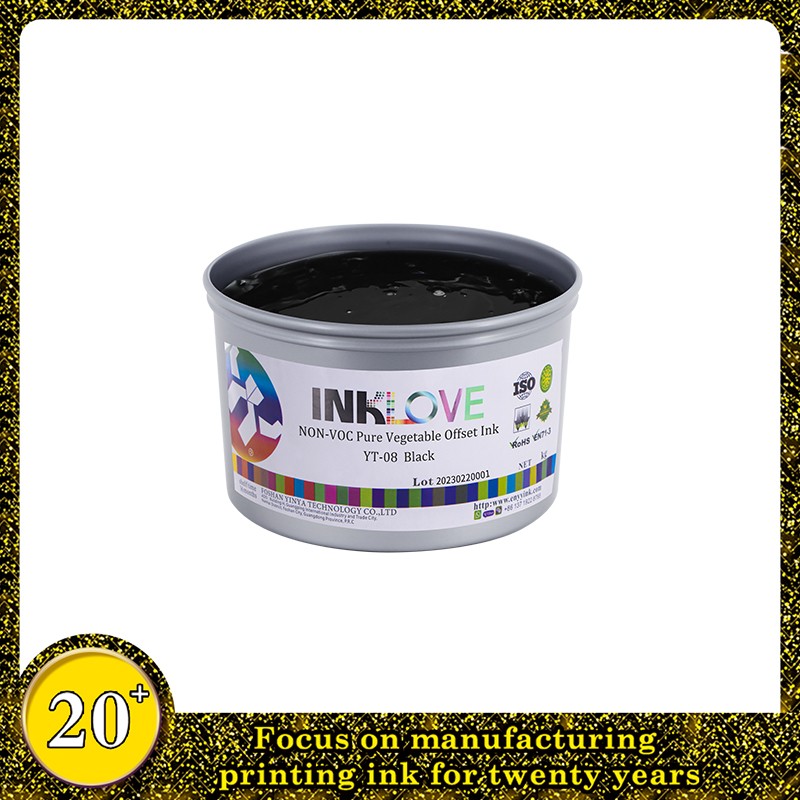
1.3 Pure vegetable oil ink
This ink is also called NON-VOC ink. It uses 100% vegetable oil as solvent and does not contain mineral oil, so VOC emissions are extremely low (≤1%). It is the most environmentally friendly type of offset ink. The ink has excellent performance, super high gloss, and dries quickly.
2 Analysis of common problems and solutions

2.1 Drying problem
The use of soybean oil and drying vegetable oil can indeed solve the problem of slow drying of soybean oil ink, but how to choose the appropriate vegetable oil is the key to solving the problem. Many ink designers choose to use linseed oil and soybean oil to solve this problem, but the drying effect is still not very ideal. The author analyzed the structure of various dry vegetable oils and conducted experimental comparisons and found that the effect of using tung oil and soybean oil is much better than that of linseed oil and soybean oil. The main component of linseed oil is linolenic acid [9,12,15-octadecadienoic acid, CH, (CH2CH =CH), (CH2), CO00H, molecular formula is C: gH302]. The main component of tung oil is elaeuric acid [9,11,13-octadecadienoic acid, CH, (CH2); (CH = CH);(CH2), CO00H, molecular formula is also C: gH02]. The conventional method for measuring the drying performance of vegetable oil in the ink industry is to measure the iodine value of the vegetable oil, and to judge the drying performance of the vegetable oil by the size of the iodine value. Tung oil acid and linolenic acid are isomers of each other, and the iodine values of the two are close, so more people choose linseed oil with a low price and slightly higher iodine value as a drying oil for use with soybean oil, but ignore that the iodine value can only characterize the number of double bonds in the molecule, but cannot characterize the position and reaction activity of the double bonds. Linolenic acid is a non-conjugated trienoic acid, while tung oil acid is a conjugated trienoic acid. The reaction activity of tung oil acid in the air is much higher than that of linolenic acid. When drying vegetable oils dry in the air, its mechanism is a self-oxidation reaction. The self-oxidation reaction mainly includes free radical reaction and chain reaction. The main steps are as shown in reaction equations (1) to (4):
Initiation phase:
RH+X.一+R●+HX (1)
Chain transfer (or chain growth) phase:
R. +O2-→RO2● (2)
RO2" +RH- +RO2H+R ● (3)
RO2H-→RO. +0H.- +Oxidation degradation products (4)
After the initiation stage, the single electron on the free radical of eleostearic acid can form a p-π conjugated system with the conjugated double bond, thereby greatly reducing the reaction energy level in the initiation stage, making the reaction easier to occur and accelerating the oxidation reaction rate. In addition to the same self-oxidation reaction as linolenic acid, eleostearic acid also has its own unique drying reaction: self-polymerization reaction, i.e., bond reaction. Tung oil molecules will undergo polymerization reaction to form a six-membered or eight-membered ring-shaped network macromolecular structure. Since eleostearic acid undergoes a large number of self-polymerization reactions, under the same conditions, the oxygen demand for the drying of tung oil film is only 1/512 of that of linseed oil film. ]. In addition, since the drying of tung oil acid is mainly based on polymerization, the oxidation product carboxylic acid produced during the oxidation process is much less than that of linseed oil, so the ink film made of tung oil has excellent water resistance and anti-theft properties. For the problem of poor drying, tung oil can be used instead of linseed oil and combined with soybean oil to make the ink have good drying properties. This kind of ink can be used normally even on paper with poor absorption and rough surface, and it can be applied to double-sided printing and rapid post-printing processing, which greatly improves the post-printing processing performance of the ink and meets various requirements of printing.

2.2 Ink viscosity and excessive viscosity issues
When using vegetable oil in combination, the binder often cannot be used normally due to its high viscosity. This is because the vegetable oil self-polymerizes to generate substances with a large relative molecular mass, which causes the system viscosity to rise rapidly, which is inconsistent with the high viscosity and low viscosity requirements of the ideal binder. For the problem of high viscosity and high viscosity, the formula should be redesigned to appropriately reduce the resin content and the amount of gelling agent used. In this way, not only can the binder system be used normally, but the prepared binder has excellent performance, meets the requirements of high viscosity and low viscosity, and has excellent wettability and drying properties.

2.3 Tung oil gelling problem
Since tung oil contains a large amount of tung oil acid, it will undergo 1,4 addition and 2,3 bonding of diene system when heated. As the temperature rises, it will gel and generate transparent solid colloidal substances. In actual production, if it is not well controlled, it will lead to more serious consequences and even the reactor will be scrapped. The self-polymerization problem of tung oil can be solved by reasonably setting the ratio of soybean oil to drying oil and controlling the appropriate refining temperature and process of the connecting material. Repeated verification of laboratory experiments and workshop batch production shows that the gelation problem can be completely avoided. At present, the ink made of pure vegetable oil system produced by DIC (Taiyuan) Ink Co., Ltd. has been officially launched on the market. It has a wide range of adaptability to paper and excellent printing adaptability. All performances have reached the level of imported similar products and are well received by customers.
3 Effects
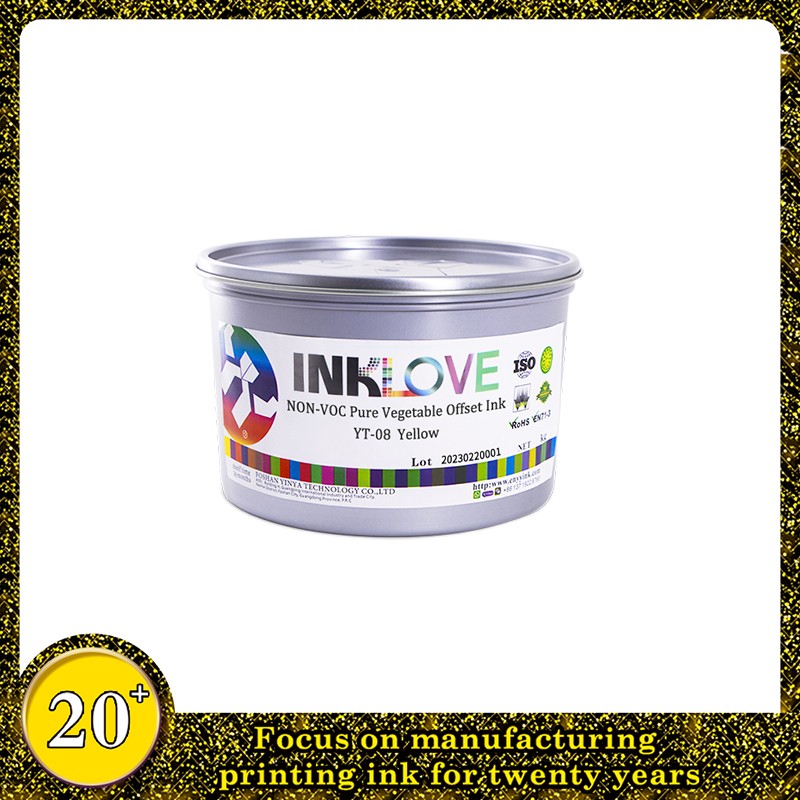
In addition to the obvious advantages of ink made from pure vegetable oil system in terms of environmental protection and printing adaptability, it also has advantages in the production of ink that are not available in the production of traditional mineral oil ink system. Specifically, it is manifested in the following aspects:
1) Pure vegetable oil system has excellent solubility for phenolic resin, and has relatively low temperature requirements when preparing the binder. It has changed the traditional production method of mineral oil ink, which must increase the preparation temperature and extend the preparation time in order to improve the wetting performance. Taking DIC (Taiyuan) Ink Co., Ltd. as an example, after adopting the pure vegetable oil system, the production temperature was reduced from the original 240C to 200C, and the production cycle was greatly reduced from the original 12 h/(batch) ~15 h/(batch) to 7 h/(batch) ~8 h/(batch). This alone saves our company about 40% of energy and saves gas costs of 1.5 million yuan/a ~2 million yuan/a.
2) Since the pure vegetable oil system has good wettability for pigments, the binder made from it has excellent color development for pigments. At the same pigment content, the optical density (color concentration) of ink made from the pure vegetable oil system is 10% ~ 15% higher than that of ink made from the mineral oil system. In other words, without reducing the color concentration, the amount of pigment used in the ink can be reduced, thereby greatly reducing the cost of the ink formulation. This alone saves our company 500,000 yuan/a to 800,000 yuan/a in pigment expenses.
3) Traditional mineral oil system solvents contain volatile aromatic substances, which will release a large amount of volatile organic substances into the environment when refined at high temperatures. For example, the released VoC is recognized as one of the main carcinogens. Since the pure vegetable oil system uses 100% vegetable oil as a solvent, the boiling point of vegetable oil is higher than VOC, so the VOC emission is almost zero, which greatly reduces the harm to the health of production operators and the surrounding environment. In addition, low-temperature refining is safer for operators. Because the flash point of mineral oil is 140 C ~ 180 C, and the flash point of refined vegetable oil is 225 C ~ 330 C, the mineral oil will catch fire if you are not careful during high-temperature refining. Therefore, compared with the high-temperature refining of the mineral oil system, the low-temperature refining of the vegetable oil system is safer.
4 Conclusion
From the promotion and sales of pure vegetable oil ink products in the past two years, the performance of pure vegetable oil ink is stable, and it has withstood the test of the market and customers. Various technical indicators have reached the design expectations, Voc emission is ≤1%, product quality is stable, and the technical process is becoming more mature. .
Therefore, the development of pure vegetable oil type NON-VOC ink is a good way for the domestic ink industry to continuously improve product added value and competitiveness under the fierce competition. As a new force in offset ink products, it will definitely have a bright market prospect.
